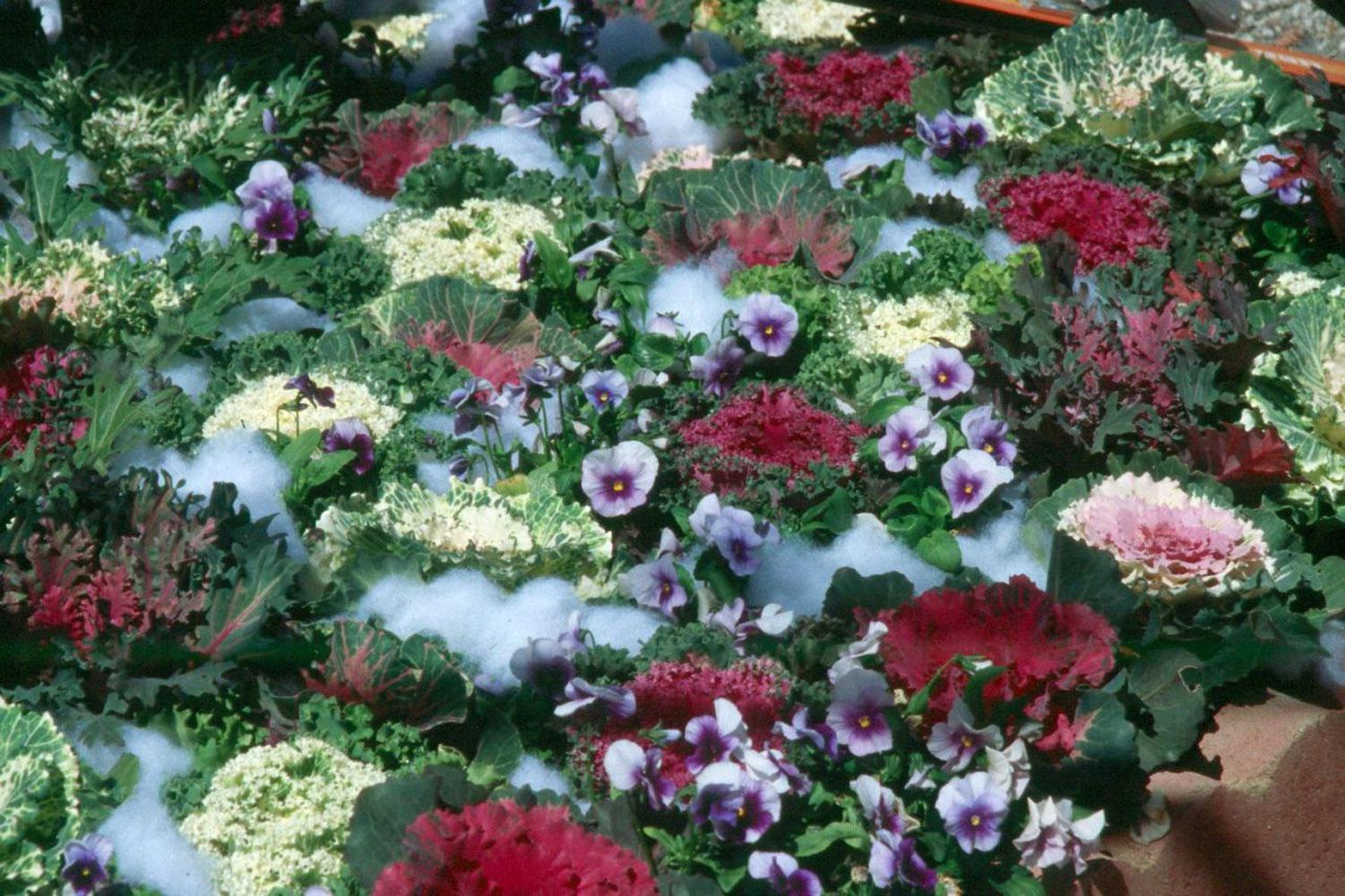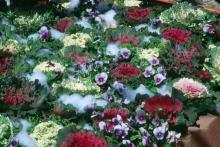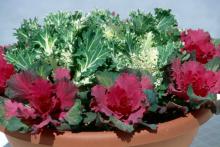Information Possibly Outdated
The information presented on this page was originally released on November 13, 2003. It may not be outdated, but please search our site for more current information. If you plan to quote or reference this information in a publication, please check with the Extension specialist or author before proceeding.
Plant flowering kale, cabbage in cool season
By Norman Winter
MSU Horticulturist
Central Mississippi Research & Extension Center
The current weather pattern appears to have been designed with the flowering kale and cabbage in mind. Considered among the best of all the wonderful cool-season plants, flowering kale and cabbage produce foliage in brilliant, colorful shades of lavender, green, purple, pink and white. They last from October or November through April, bringing the winter garden alive.
These plants are native to the Mediterranean and are indeed related to broccoli, cauliflower, collards and another terrific ornamental stock. The plants are a lot tougher than you may have thought -- once acclimated by cool weather, kale and cabbage can withstand temperatures in the mid-teens. The Chicago Botanic Garden has actually seen them survive minus-10 degrees.
Select a site in full sun with fertile, organic-rich soil. If the planting area consists of tight, heavy clay, amend with compost or humus to loosen. While preparing the soil, incorporate 2 pounds of a slow-release 12-6-6-fertilizer with minor nutrients per 100 square feet.
Set out nursery-grown transplants 12 to 18 inches apart and add a layer of mulch. In northern regions, they also can be planted in early spring.
Be sure to add a good layer of mulch after planting to help stabilize soil temperatures and conserve moisture. Flowering kale and cabbage are very cold hardy and usually come through the winter unscathed. If record-low temperatures are forecasted, these plants can be completely covered with pine straw until the weather warms.
Kale and cabbage need good drainage yet must be kept moist and fed to continue growing vigorously. Pay close attention to dry, cold fronts, which have a tendency to deplete significantly the available moisture. Feed with light applications of the pre-plant fertilizer every four to six weeks. The colors will intensify as the temperatures get colder.
Unfortunately, the same cabbage loopers that attack broccoli can be a problem for these plants as well. Watch and treat as needed with Bacillus thuringensis. This organic pest control is safe and poses no threat to gardeners.
Flowering kale and cabbage excel in beds of brightly colored pansies, violas, panolas and snapdragons. I am partial to the purple types grown with yellow pansies. For a really showy display, try bold drifts of pink or purple kale next to another drift of a white variety. Try planting a large bed of narcissus behind the kale or cabbage.
Kale and cabbage also are exceptional in large containers where you might place three in a triangular design. Plant tulips or daffodils in the center of the triangle and then place pansies around the edges.
There are many more varieties than gardeners realize. The Chidori series with its fringed, ruffled leaves and intense colors have become the most popular. The Peacock and Sparrow series also come recommended as some of the prettiest. If your favorites are the round-leaf types, then try the Dynasty series.
In Mississippi, the Redbor and Winterbor kale have gone off the charts in popularity as have new ornamental mustards like Red Giant and Mizuna.
Flowering kale and cabbage are not edible, but the leaves do make beautiful decorative garnishes for holiday feasts.




